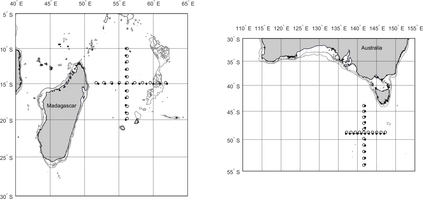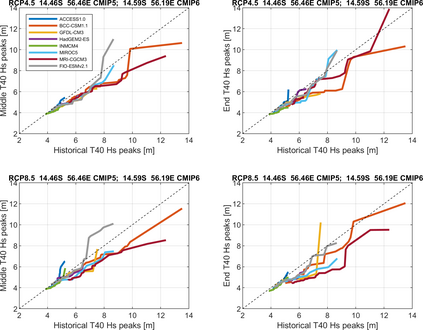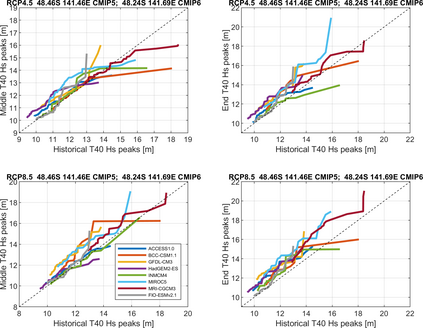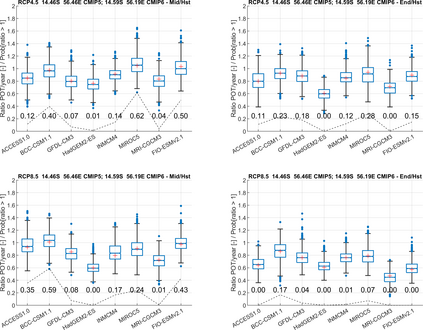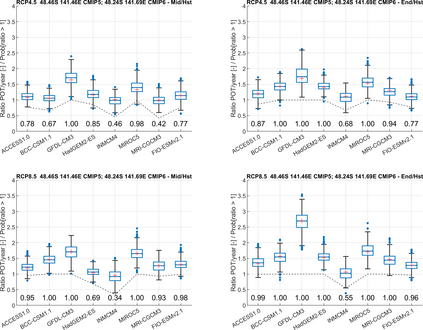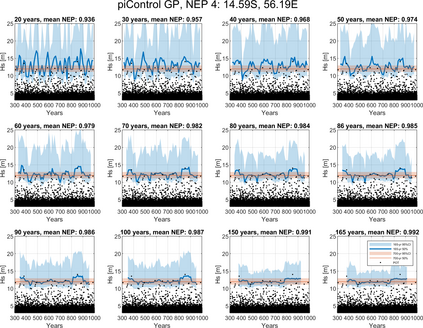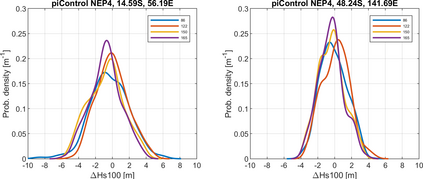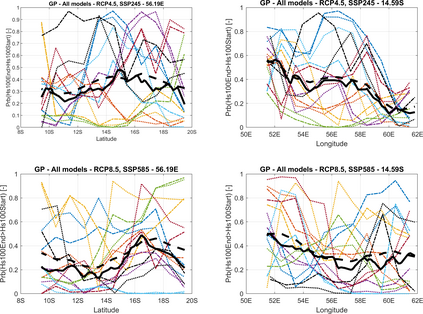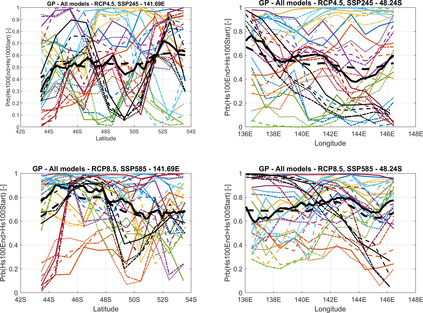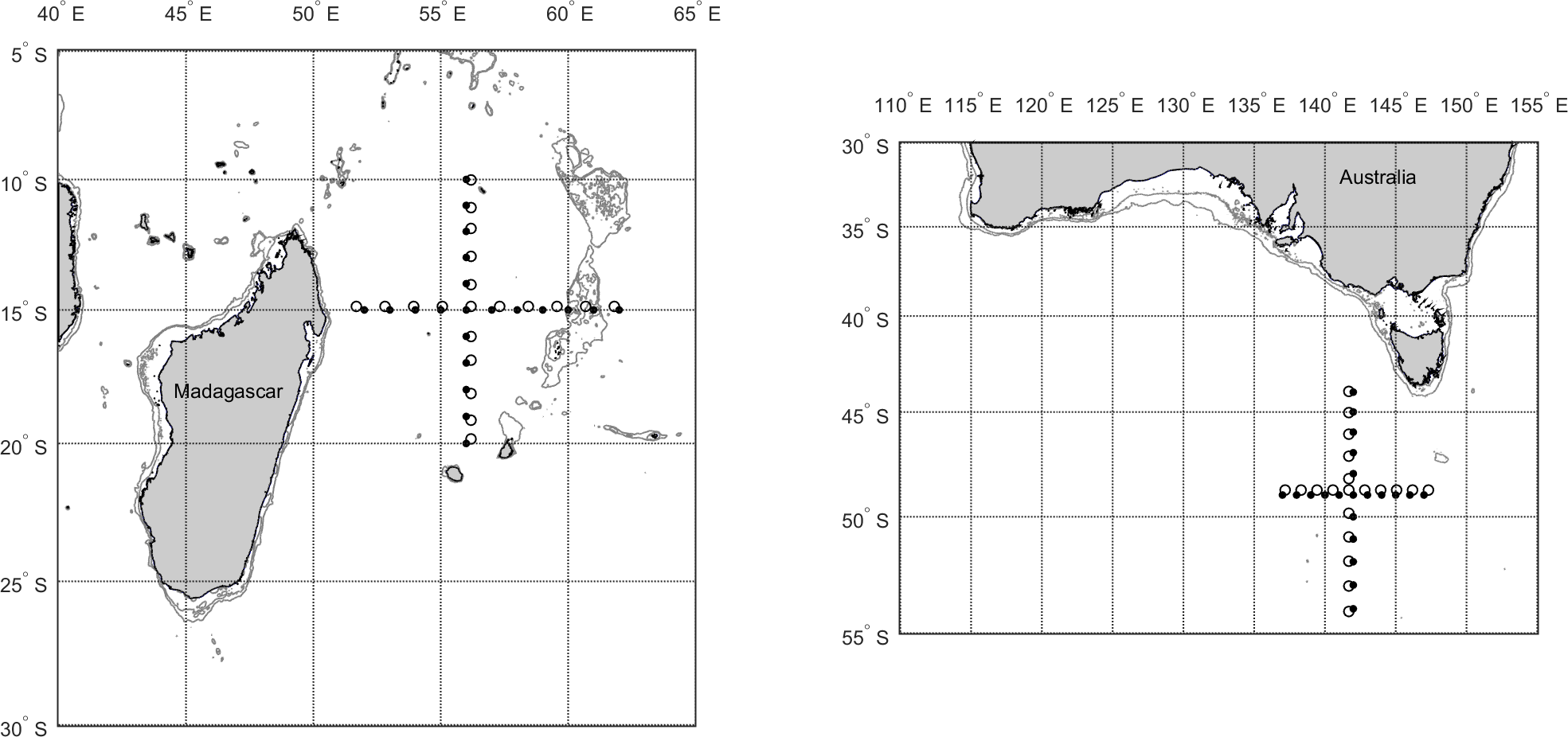Estimating climate effects on future ocean storm severity is plagued by large uncertainties, yet for safe design and operation of offshore structures, best possible estimates of climate effects are required given available data. We explore the variability in estimates of 100-year return value of significant wave height (Hs) over time, for output of WAVEWATCHIII models from 7 representative CMIP5 GCMs, and the FIO-ESM v2.0 CMIP6 GCM, for neighbourhoods of locations east of Madagascar and south of Australia. Non-stationary extreme value analysis of peaks-over-threshold and block maxima using Bayesian inference provide posterior estimates of return values as a function of time; MATLAB software is provided. There is large variation between return value estimates from different GCMs, and with longitude and latitude within each neighbourhood. These sources of uncertainty tend to be larger than that due to typical modelling choices (such as choice of threshold for POT, or block length for BM). However, careful threshold and block length are critical east of Madagascar, because of the presence of a mixed population of storms there. The long 700-year pre-industrial control (piControl) output of the CMIP6 GCM allows quantification of the apparent inherent variability in return value as a function of time.
翻译:估计气候对未来海洋风暴严重程度的影响受到巨大的不确定性的困扰,然而,为了安全地设计和运行离岸结构,需要根据现有数据对气候影响作出尽可能最佳的估计。我们探讨长期内重大波高(Hs)100年回报值估计数的变异性,7个具有代表性的CMIP5 GCM和FIO-ESM v2.0 CMIIP6 GCM的WAVEWITCHIII模型产出的变异性,马达加斯加东部和澳大利亚南部各居民区的FIO-ESM v2.0 CMIP6 GCM。但是,利用Bayesian Inference对峰值和区级峰值的不固定极端值分析,提供了作为时间函数的回报值的远值估计;提供了MATLAB软件。不同环流高(GMMS)的回报值估计数和每个居民区的长度和纬度之间有很大差异。这些不确定性的来源往往大于典型的建模选择(例如选择POT的阈值,或BMM的区长长度)。然而,马达加斯加东部的仔细的阈值和块长度是关键,因为那里存在混合的风暴群落人口,所以具有长期的ICP值。

